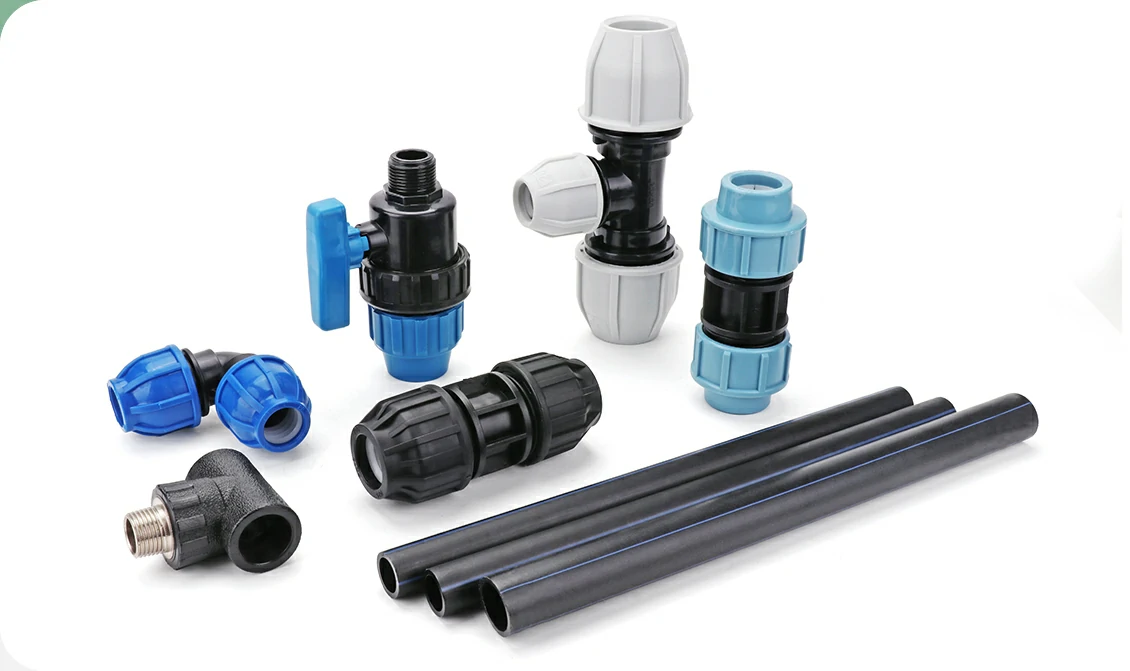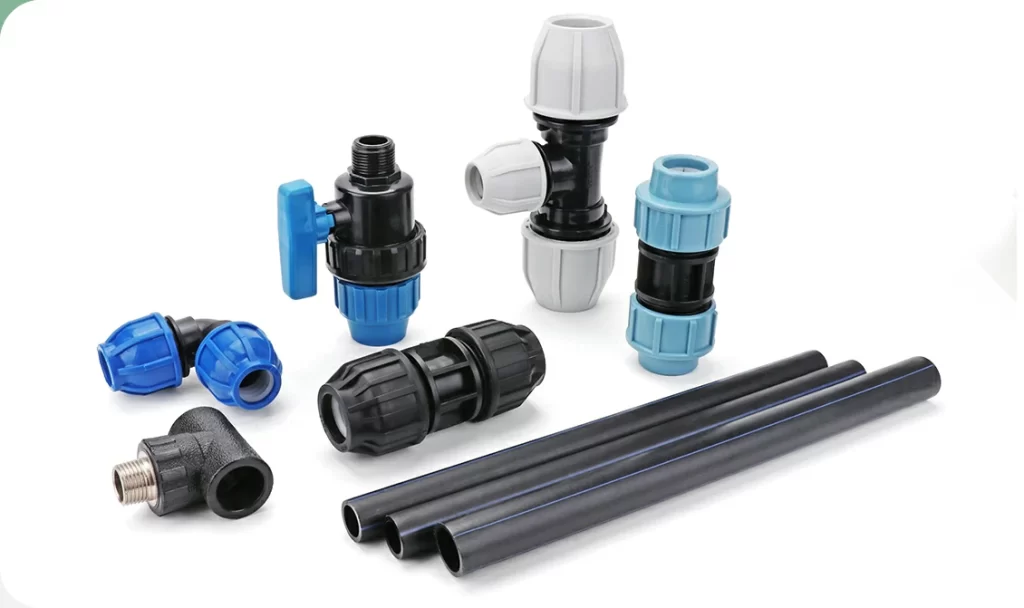Choosing the right HDPE (High-Density Polyethylene) fitting is critical. The wrong fitting can lead to leaks, system failure, or costly downtime. Whether you’re managing a water supply line, gas project, or irrigation system, here’s how to select the best fitting for your needs—quickly and confidently.
✅ Understand Your Application
Start with the basics. What system are you working on?
- Water supply? Choose fittings rated for pressure and hygiene.
- Gas lines? Ensure fittings meet safety and regulatory standards.
- Irrigation or drainage? Focus on flow rate and resistance to chemicals.
Each use case has specific performance needs. Knowing your environment is the first step to choosing right.
🔩 Choose the Correct HDPE Fitting Type
HDPE fittings come in many forms. Match the fitting to your pipe and purpose.
Common types include:
- Butt fusion fittings – Best for long-term strength.
- Electrofusion fittings – Ideal for precision and repair.
- Compression fittings – Easy to install, no welding needed.
- Socket fusion fittings – Great for smaller pipe sizes.
Not all types are interchangeable. Choose based on your installation method and pipe diameter.
📏 Match Pressure Rating and Pipe Size
Check the PN rating (Pressure Nominal). A mismatch can cause joint failure.
- PN10 to PN20 is common for water systems.
- Gas and industrial lines often require higher PN ratings.
Also, match pipe diameter precisely. Even a small misfit leads to leaks or disconnection.
🌡️ Consider Temperature and Chemical Resistance
Will your system carry hot liquids? Chemicals? Abrasives?
- HDPE performs well between -40°C to +60°C.
- For harsh chemicals, verify the chemical compatibility chart.
- Avoid fittings not certified for elevated temperatures if your system needs heat resistance.
🛠️ Look for Standards and Certifications
Always select HDPE fittings that follow normas internacionales, such as:
- ISO 4427 / ISO 4437
- EN 12201
- ASTM D3035
These ensure quality, durability, and legal compliance.
At ifanpro, all HDPE fittings are tested and certified for pressure, durability, and long-term performance. We also offer OEM and custom service for bulk orders.

⚙️ Think About Installation Conditions
Ask these questions before choosing a fitting:
- Is the jobsite easy to access?
- Do I need quick-install solutions?
- Are tools like fusion machines available?
If the jobsite lacks power, compression fittings may be your best option. For underground work, electrofusion ensures tight, leak-free joints.
🔍 Ask About Durability and Service Life
HDPE fittings can last 50 years or more—but only if they’re made well.
- Check wall thickness.
- Look for even color and finish.
- Ask for material test reports (MTRs) from your supplier.
A reliable factory like ifanpro can provide full quality documentation and support.
💰 Don’t Just Buy on Price—Buy on Value
Cheap fittings often lead to expensive problems. Consider:
- Long-term cost savings
- Reduced maintenance
- Better compatibility
Also, work with suppliers who offer after-sales support and technical consultation. This reduces your risk.
📦 Why Choose ifanpro for HDPE Fittings?
ifanpro is a professional HDPE pipe and fitting factory based in China. We provide:
- DIN/ISO-certified HDPE fittings
- Full size range (20mm–630mm)
- OEM/ODM support for project contractors and importers
- Competitive pricing for wholesale orders
Visit 👉 ifanpro.com to explore products or request a free quote.
✅ Final Checklist
Here’s your quick guide to selecting the right HDPE fitting:
| Factor | What to Check |
|---|---|
| Application | Water, gas, or industrial use |
| Fitting Type | Butt, electrofusion, compression, socket |
| Size & PN Rating | Match pipe dimensions and pressure |
| Medio ambiente | Temperature, chemicals, exposure |
| Certification | ISO, EN, ASTM |
| Installation Needs | On-site tools, labor skill level |
Conclusión
Selecting the right HDPE fitting doesn’t need to be complex. Focus on your system’s demands. Match the right type, size, and quality. Work with a trusted manufacturer.
For bulk supply, project support, or custom HDPE solutions, reach out to ifanpro—your reliable partner in pipeline systems.














Comentarios recientes